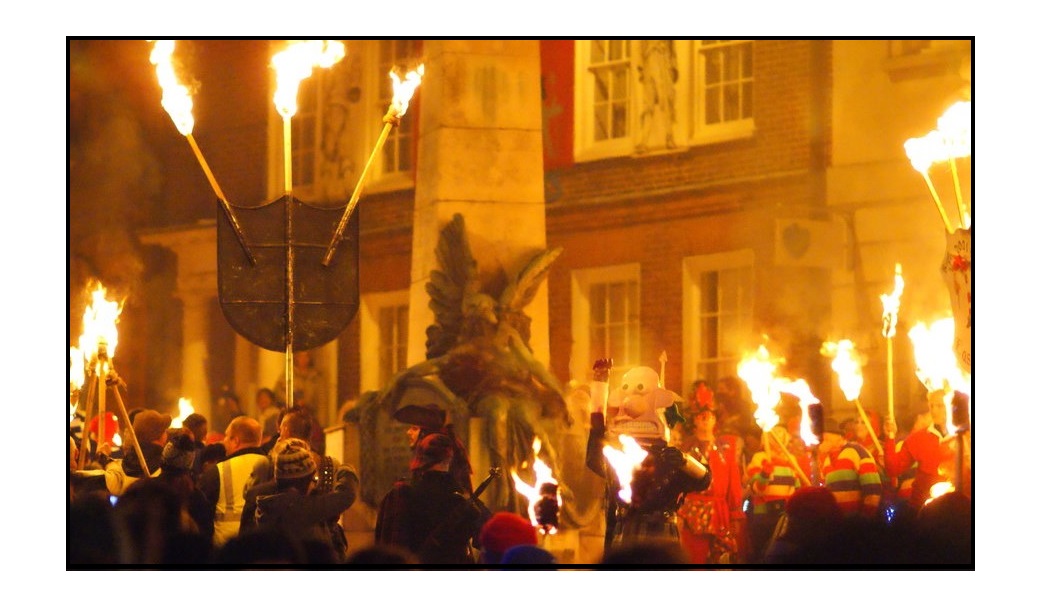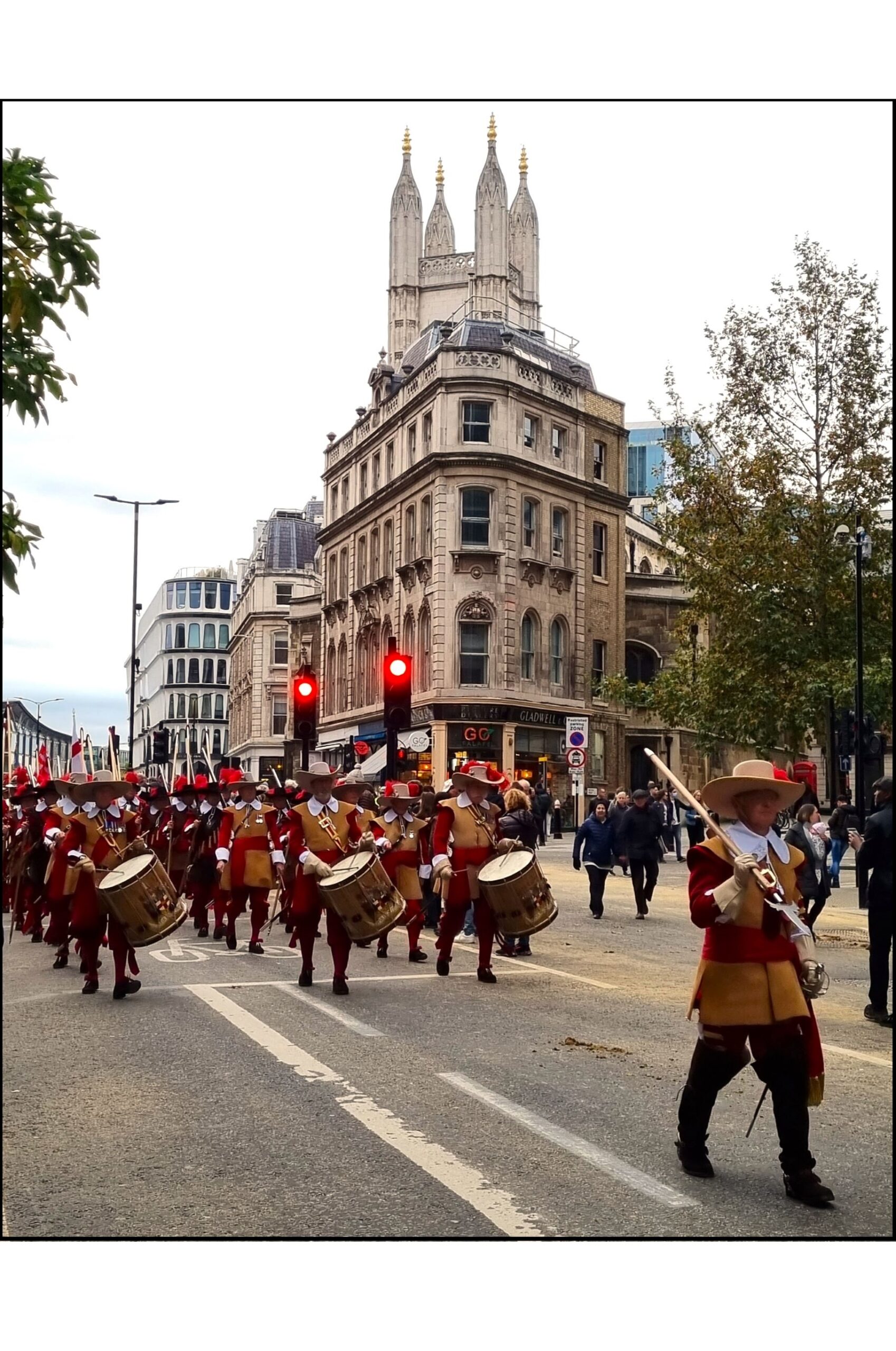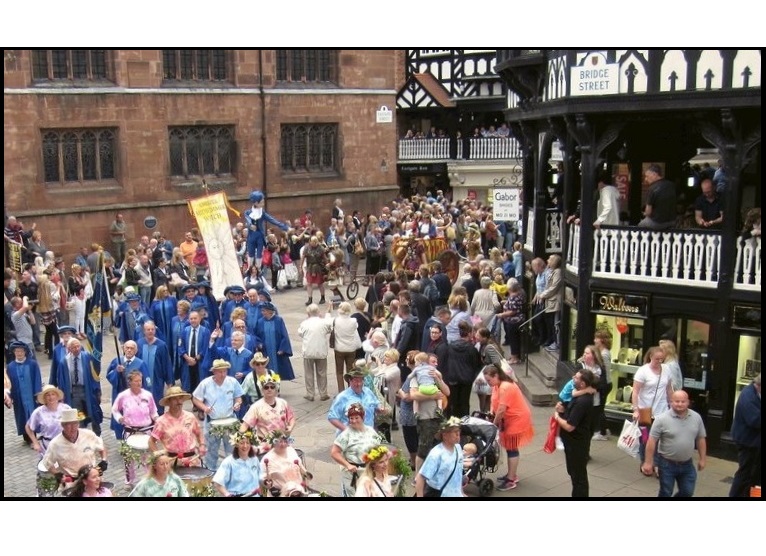
Ask a Londoner what annual parades take place in the capital, and they are likely to respond with the November Lord Mayor’s Show (which has its origins in the charter creating the office of Lord Mayor, in 1189), and perhaps the August Notting Hill Carnival (slightly later, first occurring in 1966) and the New Year’s Day Parade (a Johnny-come-lately, arriving in 1987).
But there is a ghost to be glimpsed among the living. Echoes of its features can be seen in a relative, the Lord Mayor’s Show, and in a descendant still surviving in Chester. The London Midsummer Watch was, for a time, possibly the most extravagant and popular annual public festival in England.
It may have had its origins in the 1285 Statute of Winchester, which required cities to hold a twice yearly review of citizen’s arms to check on military preparedness, so initially the main feature would have been men of the watch – the police force of medieval times. It was a night-time march taking in the major streets of the City, occurring twice within a matter of days, in the late evenings before the feast days of St John the Baptist (24th June) and Saints Peter & Paul (29th June), thus presumably fulfilling the letter, if not the spirit, of the 1285 statute.
However, the purpose of the extravaganza the Midsummer Watch then evolved into is unclear. Community ritual (I guess we’d call it a bonding exercise) is one possibility put forward; or perhaps an exhibition of the power and wealth of the livery companies or of the City itself, or a reminder to the populace of the power of the security forces. There may have been political messages in some of the displays, and religion played an important role in the pageants.
The first non-military element had appeared in 1378, possibly at the behest of the new king Richard II, who loved a bit of spectacle. Getting ever greater over the next 160 years, the Midsummer Watch’s glory years came in the opening decades of the 16th century: Stow’s Survey of London, first published in 1603, looked back with nostalgia at hundreds of flaming cressets – metal bowls mounted on poles and containing burning oil – held aloft by watchmen and liverymen as they marched through Cheapside, Gracechurch Street etc. With the benefit of hindsight, this strikes me as something of a fire hazard. There were also men in armour, giants, morris dancing, sword-players, musicians, portable pageants – floats, as we call them now – portraying religious and mythological scenes, and of course the Lord Mayor and his two sheriffs. House doors were decorated with flowers of the season and lamps were put up in the streets. The exact level of grandeur on display in the parade depended upon the wealth of the livery company to which the Lord Mayor belonged, as they footed the bill for much of the display – and whether there was likely to be a royal spectator. Regardless, it must have been some spectacle in the warm darkness of a midsummer late evening. The Lewes Guy Fawkes night torchlight parade, still held today and pictured above, can give us a hint as to its visual impact.
Whatever the purpose, just as it reached its zenith, so it was gone. The exact reason and year of its demise are disputed, but it was sudden. Perhaps the religious aspects meant it was another victim of Henry VIII’s break with Rome; perhaps it was all just too expensive for the livery companies and City authorities given the cost of his wars; perhaps there seemed no logic to the City in having both the Watch and the Lord Mayor’s Show. Whatever the reason, the spectacle ended sometime in the mid-1540s. There were plans for a revival in 1585, but it didn’t happen – the curtain had come down for good.
The Lord Mayor’s show – already well established by the mid-16th century – slowly began to take on some of the form and spectacle of its late lamented relative. And so it continues to this day.

← Pikemen, like these at the 2021 Lord Mayor’s Show, would have been a common sight in the Midsummer Watch
But the Lord Mayor’s Show is in November, and frequently plagued by inclement weather. The New Year’s Day Parade is in January, for goodness sake. The Notting Hill Carnival is vast and spectacular and usually has the weather on its side but, well, its in Notting Hill, firmly in the west of London. And none of them, I need hardly add, have any cressets.

← Chester revived its Midsummer Watch – as a daytime parade – in 1988 and it continues to this day (tho’ the 2020 parade is a victim of covid-19). Where Chester leads, perhaps London should follow.
I wonder if the London Midsummer Watch was ever cancelled due to an outbreak of plague.
Selected Bibliography:
Credits: